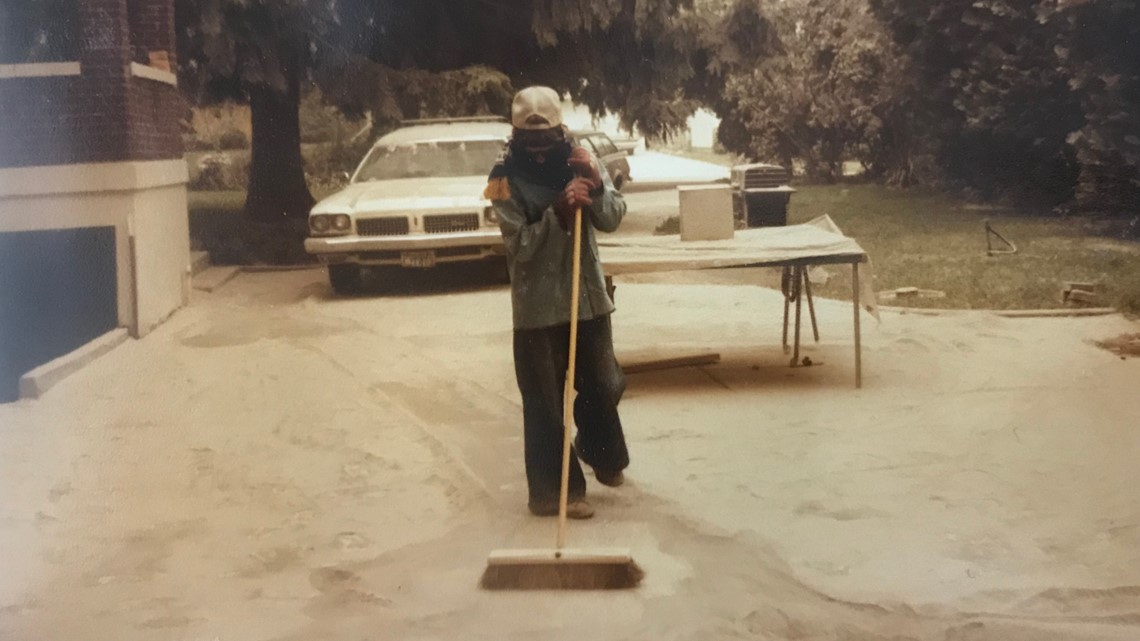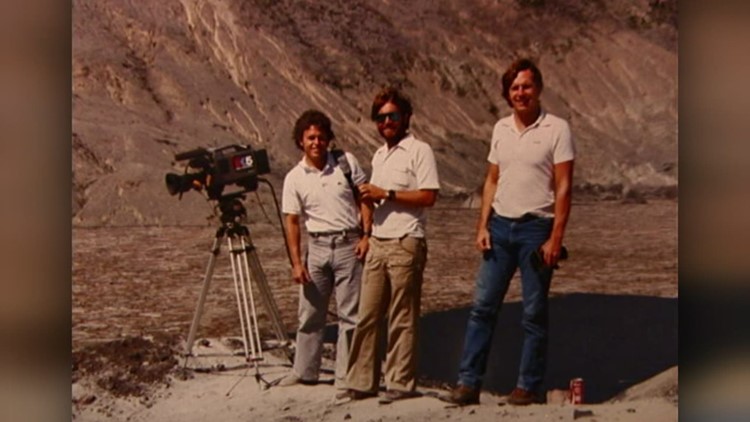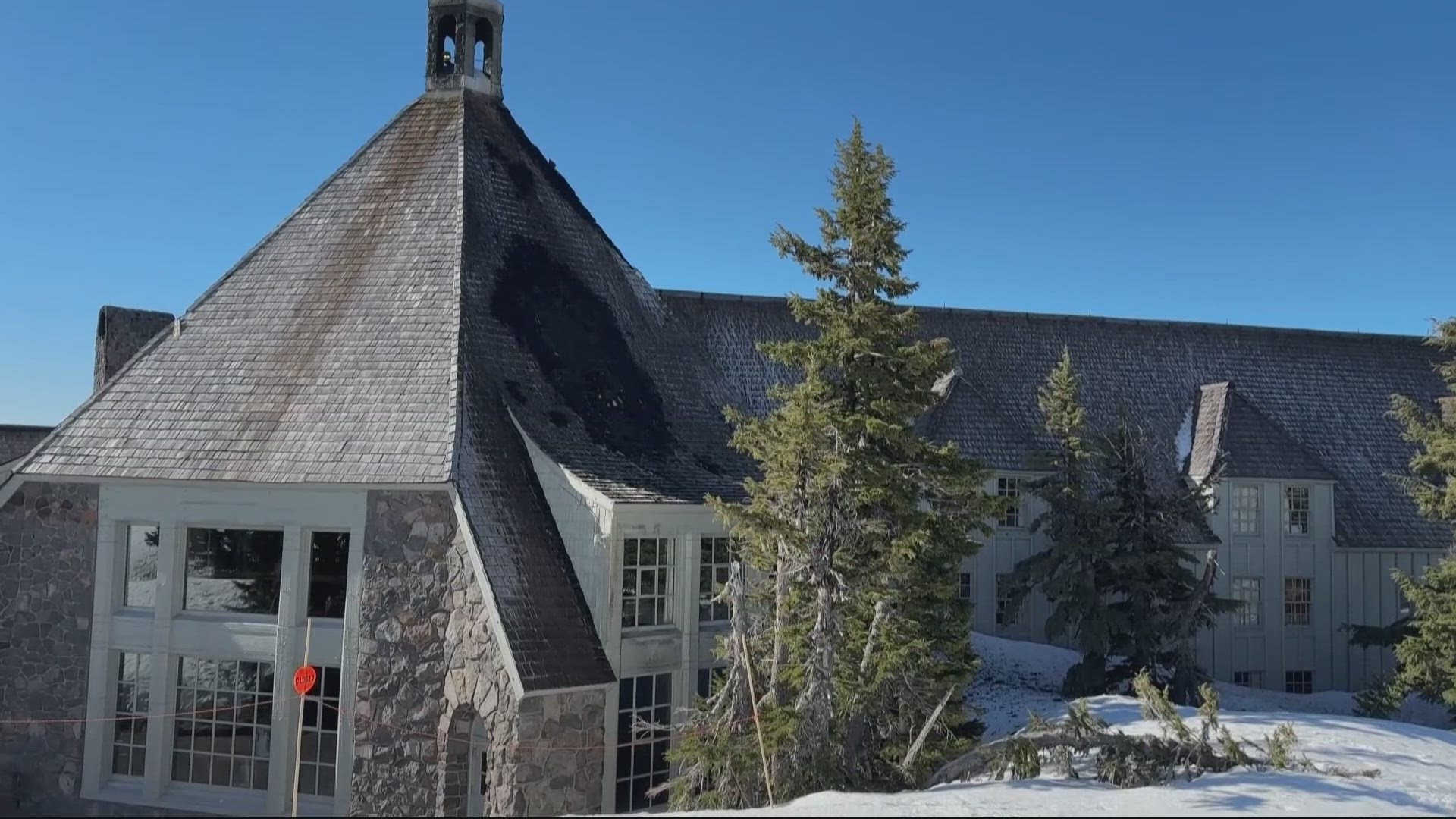SKAMANIA COUNTY, Wash. — On May 18, 1980, the most active volcano in the contiguous United States erupted, killing 57 people and causing more than $1 billion in damages.
Many KING 5 employees were alive during Mount St. Helens eruption.
Here are their stories:
Rich Marriott
KING 5 meteorologist
When the first earthquakes occurred on Mount St. Helens on March 16, 1980, I was working as a meteorologist for the U.S. Forest Service at the Northwest Avalanche Center. Those earthquakes also triggered widespread large avalanche on the mountain in the late winter snowpack.
As the volcano became more active and generated hundreds of additional earthquakes in the following weeks, more and more scientists flooded into the region. For public safety, an area around the mountains was designated as "The Red Zone," where only people working on the eruption were allowed.
As the eruption progressed and the bulge on the north side of the mountain grew, we decided that it was too dangerous for our observer, and finally on May 8th we went down to Mount St. Helens and removed her and all of the weather equipment. Not really understanding the potential danger, the three of us drove up to the top of the Timberline loop road to watch the sunset on the mountain – a spot that ended up being the lip of the crater 10 days later.
The eruption happened on a Sunday morning when I wasn't forecasting, so I slept through it, but the magnitude of the eruption was an amazing realization later in the day. Weather forecasts for around the mountain suddenly became important to help with the rescue efforts.
Four days after the eruption, we were invited to join a group of NWS personnel to go down to the mountain and fly on the rescue missions to add eyes to the search. The Chinook helicopters flew set grids and looked for survivors and debris.
The landscape was completely transformed.
Chris Daniels
KING 5 chief reporter
I was there, along with my parents, on May 17, 1980.
My dad was an avid photographer who loved to go get pictures of the then snow-cone mountain.
It was a Saturday, and we planned on camping out overnight in the safe zone in the back of our orange Datsun pickup. But, as my parents tell it, I protested.
We drove back to my grandparents' house in Lewis County.
The next morning, we woke up to the news of the eruption.
As a family, we went back years later to the campground we had selected for the sleepover and it was washed out by mudflow.
I still remember the immediate days after – the playgrounds being covered with a thin layer of ash. But that was nothing compared to what Yakima endured.
Years later, in the 2000s, the mountain briefly erupted over the course of a few days. This time I had a chance to cover it as a reporter. It was a strange, out-of-body experience.
I will always feel an odd connection to that mountain.
Susannah Frame
KING 5 chief investigative reporter
I was a teenager living in Yakima when the mountain blew.
We got slammed with ash – at first it was scary. It went from bright sunlight to total darkness by noon.
No one knew what was going on.
When we finally got word that Mount St. Helens had erupted, we were told not to touch the ash because it could be toxic. We all wore masks outside. The ash was all over surfaces inside as well.
We were told not to drive our cars because the ash would ruin engines.
School was cancelled.
My family spent weeks doing nothing but shoveling ash. It never seemed to end. My parents hired two off-duty firemen to climb on top of our steep, large roof to get all the ash off. They swept two tons off it.
The only excitement was that news crews from all over the world converged on little Yakima because we got so much ash.
Life eventually got back to normal, but the ash never left. My mom found lots of it digging in her garden the other day.


Doug Dillon
KING 5 photojournalist
I was 11 and living in the Bay Area at the time.
I remember watching the news that day and seeing all the ash in the air and on the ground all over Washington and beyond.
We had good family friends that lived in Bellevue and I remember my parents calling and checking on them.
One of my friends' dads was up there on business when it happened. When he came home from the business trip he gave us each a jar with Mount St. Helens ash. I had that jar for many years.
My wife and I moved to Washington. During a camp out to Mount Rainier we took our kids on a hike and showed them the layer in the soil that is from that eruption.
I'll always remember that event.
Drew Mikkelsen
KING 5 South Bureau chief
It was a huge story, even for a third grader 750 miles away.
I remember talking about it in my San Francisco elementary school.
I thought I was super-cool that Christmas when I had a Christmas tree with Mount St. Helens ash. At least that's what the guy at the lot told us when he sold us the tree.



